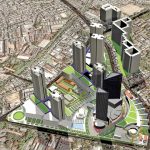-
Editorial
January 2013

 To personalise the environment around us is an instinctive reaction intended to organise our surroundings to better suit our lifestyles. This customization of spaces stems from the need to better demarcate one’s own entity and distinguish one from the other. This is where the science of interior design takes predominance in creating and recreating environments to suit the individual’s needs within what then becomes the shell or core structure.Interior design even in its crudest of forms can be seen in the early days of the cave dwellers habitats where cave walls have been found to be riddled with paintings and murals depicting the life of the dwellers. This does not differ from its essence to that which we recreate today, as an interior can speak volumes on the individuals taste, identity and choice of passing trend.
To personalise the environment around us is an instinctive reaction intended to organise our surroundings to better suit our lifestyles. This customization of spaces stems from the need to better demarcate one’s own entity and distinguish one from the other. This is where the science of interior design takes predominance in creating and recreating environments to suit the individual’s needs within what then becomes the shell or core structure.Interior design even in its crudest of forms can be seen in the early days of the cave dwellers habitats where cave walls have been found to be riddled with paintings and murals depicting the life of the dwellers. This does not differ from its essence to that which we recreate today, as an interior can speak volumes on the individuals taste, identity and choice of passing trend.
To embark on interior design is no easy task as the interior artist must be creative, instinctive, flexible and above all must connect with the persona of the client to execute an accurate finish. This is where the science of interior design closely associates the science of the mind as the artist must fully be aware of the personalities of the dwellers to ensure that the dwelling is not only liveable but is reflective of the lifestyle the individuals lead. Often this is not an easy task as it is not one person to each dwelling. To be able to marry the personalities of the individuals along with their preferred interior concepts and achieve a delicate balance between each intertwining determiner can be unsuccessful if not properly understood. Flexibility of design is not easily associated with interior design as the artist must work most often with a given space or spaces. Therefore as the space at hand is not flexible the artist must be so in order to be able to execute a certain concept in one way or another. Design flexibility will ensure minimal compromises during execution.
Construction has always been a major contributor to a country’s economy, and thus redundancy of a building when the function it was once built for ceases to exist can affect the economy adversely. Interior design can re-create within the shell and give new meaning to a building that would have otherwise become functionally obsolete. Interior design holds the power to breathe life into structures which would otherwise be unliveable; renovations modifications and additions rely greatly on the skill of the designer to merge the existing with the new in an innovative and creative manner. Gone are the days where a structure is built to house one specific function, today we see with the power of interior design as ware houses become restaurants homes become studios and so on. Successful interior design will not only stop at the demarcations of the interior space, but will reflect through the building, projecting a new image on its exterior pronouncing its image to its context.
Peshali Perera











